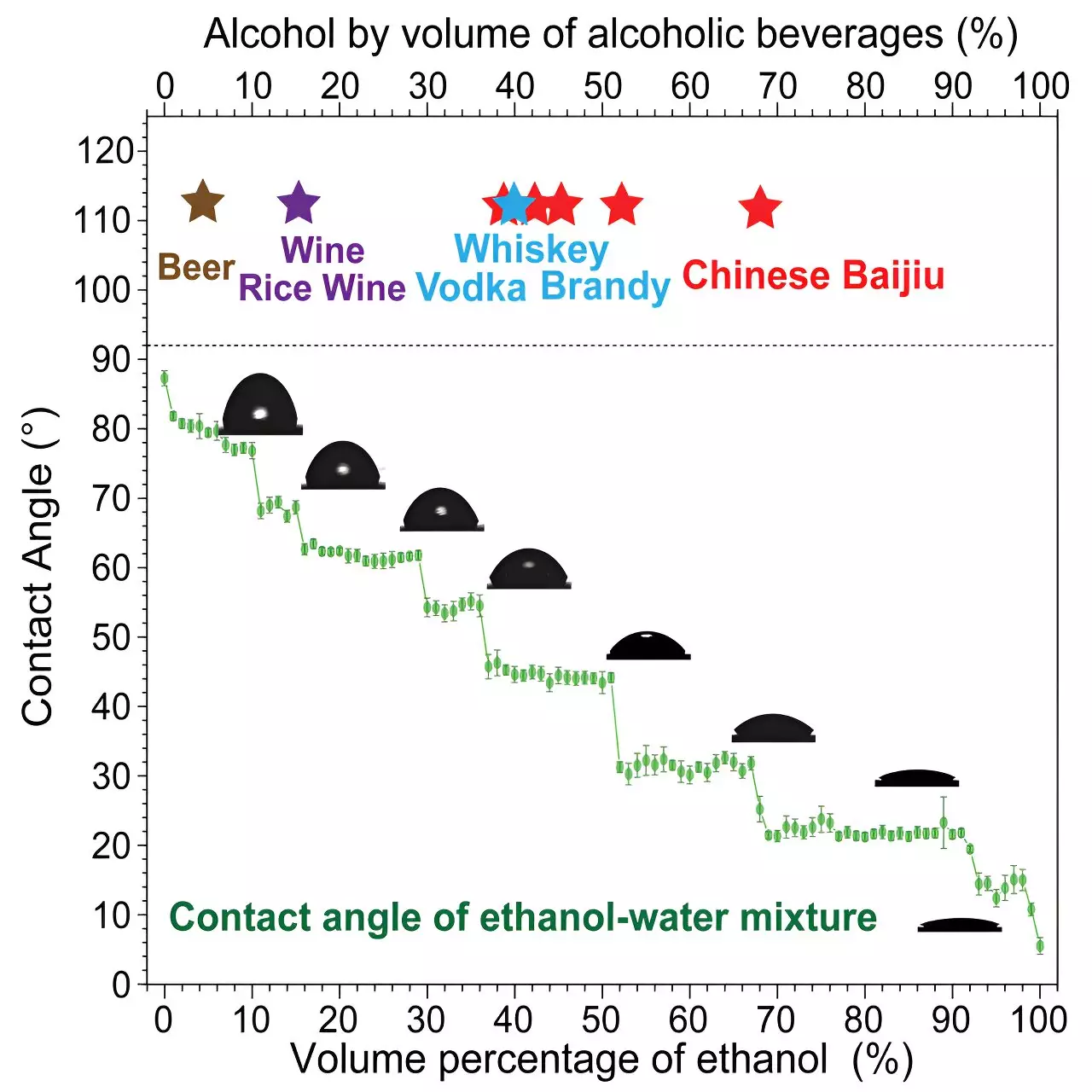When it comes to alcohol consumption, people have different preferences regarding the temperature at which they enjoy their favorite beverages. Whether it’s beer, white wine, red wine, baijiu, or sake, the temperature at which these drinks are served can significantly impact the overall taste experience. A recent study published in the journal Matter delves into how temperature influences the perception of alcohol taste, shedding light on the molecular interactions that occur between water and ethanol at different temperatures.
Lead author Lei Jiang and first author Xiaotao Yang embarked on this research journey after a casual discussion during a beer-drinking session. Curious about the specific concentrations of alcohol in Chinese baijiu, they decided to investigate the molecular interactions that contribute to the unique taste profiles of alcoholic beverages. Through a series of experiments measuring the contact angle of solutions with varying alcohol concentrations, the research team uncovered intriguing findings.
One of the key revelations from the study was the formation of distinct cluster structures of ethanol and water molecules at different alcohol concentrations. At lower ethanol concentrations, pyramid-shaped clusters dominate the solution, while higher concentrations result in chain-like arrangements of ethanol molecules. These structural differences play a crucial role in how alcohol taste is perceived, with chain-like structures contributing to a more “ethanol-like” taste.
Interestingly, the researchers observed that the formation of these cluster structures and their impact on taste perception were temperature-dependent. Cooling or heating the solutions resulted in the disappearance or emergence of specific cluster structures, leading to variations in how alcohol taste is experienced. For instance, baijiu with alcohol concentrations of 38%–42% and 52%–53% exhibit distinct cluster structures at room temperature, but these differences diminish at higher temperatures, altering the perceived taste.
The insights gained from this study have implications for the beverage industry, particularly in achieving desired taste profiles with lower ethanol concentrations. By leveraging the knowledge of how cluster structures influence taste perception at different temperatures, beverage manufacturers can optimize the taste of their products while minimizing the alcohol content. Whether it’s baijiu, beer, or other alcoholic beverages, understanding the molecular interactions that dictate taste perception opens up new possibilities for product development and flavor enhancement.
As consumers continue to seek unique and enjoyable drinking experiences, the intersection of science and alcohol taste perception offers a fascinating realm of exploration. By exploring the intricacies of molecular clusters, contact angles, and temperature influences on taste, researchers are unlocking the secrets behind our favorite beverages’ flavors. From the appeal of a chilled beer on a hot day to the complex taste profiles of traditional spirits like baijiu, the science of alcohol taste perception adds a new dimension to the art of enjoying drinks responsibly.
Through innovative research and a thirst for knowledge, scientists are paving the way for a deeper understanding of how temperature impacts alcohol taste perception. By unraveling the molecular mysteries that shape our sensory experiences, we gain valuable insights into the subtle nuances of flavor and how they can be manipulated to create optimal drinking experiences. As we raise our glasses to toast to the future of beverage science, let’s savor the intricate dance of molecules that make every sip a moment to remember.


Leave a Reply